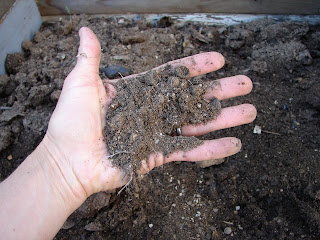So you have a worm bin, or you just started it, what now? I am going to start with LOCATION.
Worms like to be kept warm so keep the bin away from the cold winds and frosts, ideally situating the bin in a sheltered spot that is sunny for only the early part of the day. Avoid very sunny locations where heat can build up as too much sun could overheat the bin which will cook the worms. Be sure to give your worms at least 12 inches of soil for protection from extremes. If you want your worms to keep on making compost during the winter, it may be necessary to locate them in a shed or garage where temperatures do not fall below freezing.
 |
| Avoid extremes! |
You should locate your bin in a partly sunny spot away from flood zones in the winter and away from intense heat in the summer.
FEEDING the worms is pretty simple, here are some examples.
Strawberry tops and that stuff that comes out the back of a juicer are great choices for worm food. Don't throw this stuff away!
Worms LOVE banana peals, LOVE them.
Egg shells are also a great choice for worm food. The worms don't necessarily eat the shells it is just a great addition to the soil for aeration and organic matter. I guess it isn't food, just a good soil amendment.
These are things you should NOT feed your worms.
It isn't because the worms can't break it down (it would take a while to do) it is because other animals will try and get at it first. Mice and small carnivores will work really hard to get into your bin if you have meat, dairy or fats inside.
Avoid too much acidic material such as lemon and orange skins can be hard for the worms to digest. Adding egg shells to the mix on an on-going basis will help keep the pH balance.
Be careful how much food you add: too much may heat up the bin and drive the worms away, leaving the food to putrefy and the bin will begin to smell which a well run bin does not.
Avoid too much acidic material such as lemon and orange skins can be hard for the worms to digest. Adding egg shells to the mix on an on-going basis will help keep the pH balance.
Be careful how much food you add: too much may heat up the bin and drive the worms away, leaving the food to putrefy and the bin will begin to smell which a well run bin does not.
| PLEASE ADD | DO NOT ADD | |
|
|
For a more in-dept reading on what worms eat check this link out http://www.allthingsorganic.com/How_To/05.asp
Soil moisture is a big thing to look out for in your worm bin. A great test for moisture is to grab a handful of soil and squeeze it in your hand. Does it crumble? Then the soil needs water. Does it squish out your fingers? Then you have too much moisture. Does it hold it's form? Then the soil is about right! You should water your worm bin like it was a growing plant, the summer months will demand more moisture than the winter. It is a good idea to check your bin everyday, as you add your worm food just squeeze some soil.
Soil moisture is a big thing to look out for in your worm bin. A great test for moisture is to grab a handful of soil and squeeze it in your hand. Does it crumble? Then the soil needs water. Does it squish out your fingers? Then you have too much moisture. Does it hold it's form? Then the soil is about right! You should water your worm bin like it was a growing plant, the summer months will demand more moisture than the winter. It is a good idea to check your bin everyday, as you add your worm food just squeeze some soil.
 |
| Good damp soil clumps together. |
 |
| Dry soil will fall through your fingers. |
Here is another great link if you want to read more about the ins and outs of worm bins http://www.wormpoop.com/Composting/Composting.htm






